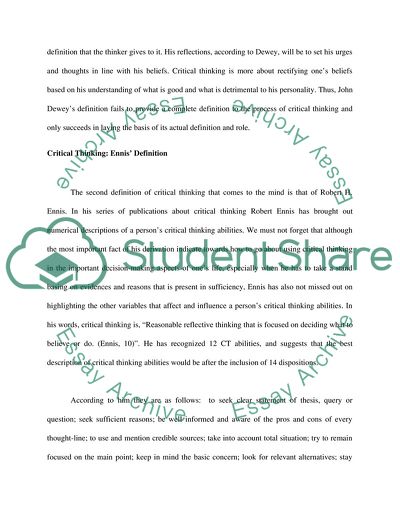Cite this document
(Critical Thinking: Definitions and Descriptions Revisited Report Example | Topics and Well Written Essays - 1250 words, n.d.)
Critical Thinking: Definitions and Descriptions Revisited Report Example | Topics and Well Written Essays - 1250 words. https://studentshare.org/philosophy/1832190-critical-thinking
Critical Thinking: Definitions and Descriptions Revisited Report Example | Topics and Well Written Essays - 1250 words. https://studentshare.org/philosophy/1832190-critical-thinking
(Critical Thinking: Definitions and Descriptions Revisited Report Example | Topics and Well Written Essays - 1250 Words)
Critical Thinking: Definitions and Descriptions Revisited Report Example | Topics and Well Written Essays - 1250 Words. https://studentshare.org/philosophy/1832190-critical-thinking.
Critical Thinking: Definitions and Descriptions Revisited Report Example | Topics and Well Written Essays - 1250 Words. https://studentshare.org/philosophy/1832190-critical-thinking.
“Critical Thinking: Definitions and Descriptions Revisited Report Example | Topics and Well Written Essays - 1250 Words”. https://studentshare.org/philosophy/1832190-critical-thinking.


